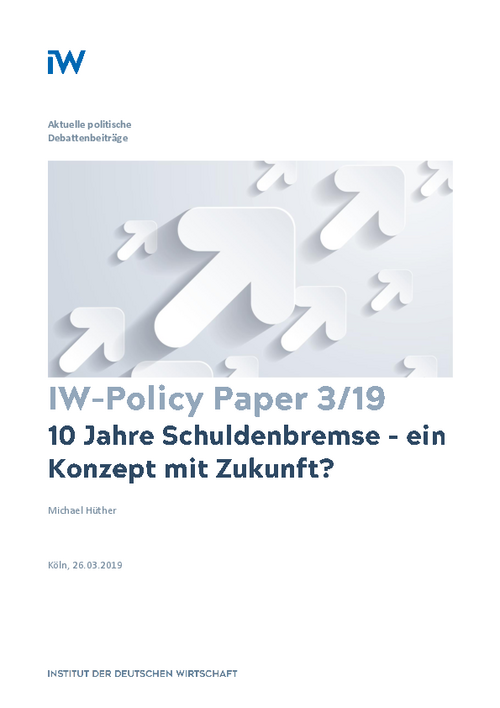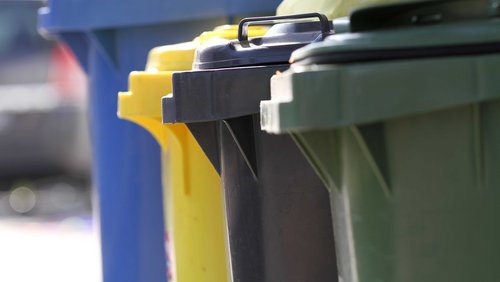The introduction of the German debt brake 10 years ago was justified from a historical perspective. Compared to the early 1960s, the debt ratio had more than quadrupled from 20 to 80 percent despite consolidation efforts. In addition, due to government bonds yields well above the GDP growth rate, it was assumed that public borrowing would result in an intergenerational redistribution at the expense of future generations.

10 years of debt brake - a concept with a future?
IW-Policy Paper

The introduction of the German debt brake 10 years ago was justified from a historical perspective. Compared to the early 1960s, the debt ratio had more than quadrupled from 20 to 80 percent despite consolidation efforts. In addition, due to government bonds yields well above the GDP growth rate, it was assumed that public borrowing would result in an intergenerational redistribution at the expense of future generations.
At first glance, this type of financial self-commitment appears to be successful, as the German public debt ratio has recently approached the Maastricht threshold of 60 percent. However, it is questionable whether the debt brake has actually contributed to this by increasing consolidation efforts, as the government consumption ratio today is at the same level as in 2009. On the contrary, the falling interest burden, an increase in real tax revenue per capita, and the recent considerable increase in employment appear to have created fiscal leeway.
With a favourable interest rate environment, the conditions for public debt have changed fundamentally since the economic and financial crisis of 2009. Today or in the foreseeable future, an intergenerational redistribution at the expense of future generations is therefore no longer given. In view of the large need for investment, the debt brake reduces political room for manoeuvre and lacks an economic rationale. In line with the "golden rule of fiscal policy", it should therefore be adjusted in terms of innovation and growth policy.
A feasible option would be to implement debt-financed public investments in a separate federal investment fund. In addition, a better funding for municipalities should address the municipal investment backlog. Apart from investment expenditure, the debt brake would remain in place, i.e. the general ban on debt financing with a cyclical component.

Michael Hüther: 10 Jahre Schuldenbremse – ein Konzept mit Zukunft?
IW-Policy Paper

More on the topic

Two years later: The EU Circular Economy Package
The European Commission aims to push forward the concepts of ‘recycle, repair and re-use’ as well as waste avoidance. Two years after adopting the Circular Economy Package, EU institutions finally agreed on new EU waste rules.
IW